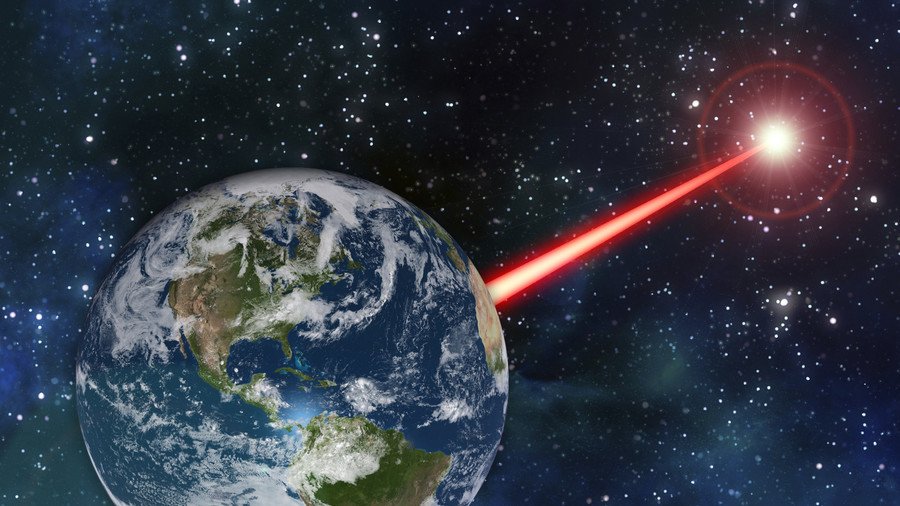‘Planetary torch’: Earth’s laser tech could be used to lure alien communications – study

Existing laser technology could be used to fashion a planetary ‘porch light’ for Earth to attract aliens astronomers from as far as 20,000 light years away into communicating with us, according to a new study.
The epic project, described as “challenging, but not impossible,” would require a massive 30-45 meter telescope aimed at space and a high-powered 1-2 megawatt laser. The researchers claim the combination would produce a beam of infrared radiation so strong it could stand out from the sun’s energy.
“Such a signal could be detectable by alien astronomers performing a cursory survey of our section of the Milky Way,” according to the Massachusetts Institute of Technology (MIT) research team.
READ MORE: ‘Large uncertainties’: Scientists dismiss Harvard paper’s ‘alien spacecraft’ theory
Their paper on the proposed space beacon has been published in The Astrophysical Journal.
The ‘porch light’ could be particularly useful to attract any neighborly alien astronomers living close by – perhaps around Proxima Centauri, the closest star to Earth, or TRAPPIST-1, the star located some 40 light-years away that’s host to seven exoplanets, three of which are potentially habitable.
If the beam were to be noticed, it could also be used to send Morse code-like messages in the form of pulses.
“If we were to successfully close a handshake and start to communicate, we could flash a message, at a data rate of about a few hundred bits per second, which would get there in just a few years,” says James Clark, author of the study.
READ MORE: Pandora, anyone? Russia plans to set up moon base inhabited by ‘avatar robots’
However Clark acknowledges that a megawatt laser could pose some safety concerns; it could damage people’s vision if they looked directly at it, for one. It could also potentially scramble any camera aboard a spacecraft that happens to pass through it.
He says the research was a primarily a “feasibility study,” whether or not it’s actually a good idea, he says, is a “discussion for future work.”
Like this story? Share it with a friend!














